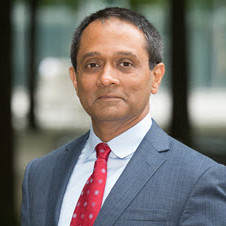How COVID-19 Will Change Clinical Trials And End The Patient Recruitment Challenge

By Ed Miseta, Chief Editor, Clinical Leader

Clinical technologies are evolving and promise to change how studies are conducted. Still, change takes time. Most companies do not rush out to embrace every new technology that comes along. Therefore, clinical operations in many companies is still a manual process.
“There are three factors that have prevented trials from becoming more efficient,” says Badhri Srinivasan, head of global development operations for Novartis. “We can talk about new technologies and technology enhancements, but clinical trials remain a largely manual operation. Trials still involve a lot of feet on the street. They require people to visit hospitals and sites. They require people to count pills. They require people to look at diaries and records. This is still a very manual process.”
Srinivasan also believes most operations personnel operate with a just-in-time mentality. They find sites, recruit patients, and treat those patients. Few have the luxury of looking down the road to understand how technologies might impact them 6, 12, or 36 months down the road. They must focus on the patients and challenges in front of them right now.
Unfortunately, there is a third factor impacting trial efficiency that Srinivasan mentions. Clinical trials have been very disconnected between sponsors, sites, and patients. All stages and stakeholders of a study should be closely connected and aligned, but currently they are not. This will often result in trials being more site centric than patient centric, due to sponsors having a closer relationship with investigators than patients.
Regulators Are Embracing Change
While pharma may have been reluctant to embrace new technologies in the past, the COVID-19 pandemic has changed thinking across the industry. Although sponsor companies are taking a closer look at new technologies, Srinivasan believes regulators and the current environment are the real factors pushing the change.

Abernethy has been driving an initiative called the Technology Modernization Action Plan (TMAP). One of the three main elements of TAMP has to do with engaging stakeholders to drive technological progress. Srinivasan believes this plan will enable the agency to engage technology companies directly, as opposed to working through sponsors. He hopes TAMP will incentivize innovation and create an environment where innovation can be incorporated quickly and safely.
“Innovation is good, but the price of failure in drug development is extremely high,” he states. “If you produce a bad smart phone, you lose some sales, but the problem can be fixed in the next release. In clinical trials, if your innovation fails, your trial fails. On top of that, you may be putting a patient’s life in danger. That is a high bar and a high price to pay. That situation is what leads to pharma companies being conservative. The pharma industry has always been a breeding ground for proof of concept, but the proof of concept seems to rarely graduate into full blown innovations.”
Another issue is that different regulatory agencies do not operate as one regulatory body. A company like Novartis might propose an innovative idea that is accepted by the FDA or the MHRA, but then rejected by the EMA. Therefore, the worldwide acceptance or receptivity of these innovations becomes important. If the company cannot get worldwide receptivity of an innovation, then Srinivasan notes there is no practical way to pursue it.
COVID Forces Innovation
Although COVID-19 has had a devastating impact on trials around the world, Srinivasan believes it has also brought a focus to process innovation. “It has created an urgency and an acceleration to adopt new technologies,” he says. “I believe it has also shifted the focus from innovative therapies to innovative processes. You cannot have innovative therapies if your clinical process cannot function in the COVID world. I may have a fantastic therapy but be unable to get it to the patient because of process limitations.”
The pandemic created paradoxes that pharma companies had to deal with. For example, sites want to meet with patients in person, but cannot because travel is not possible. The situation mandates that companies embrace innovative solutions to solve these types of problems. Without those paradoxes, Srinivasan believes durable, sustainable innovation will not occur. The paradox forces the innovation.
One of the first changes Srinivasan noticed was the determined effort to virtualize trials. Clinical executives are now looking at every aspect of a trial and asking if it can be done virtually. The virtualization is being enabled by new technologies and regulators making implementation easier. The thinking is if these innovations can work in a pandemic-driven world, they will surely function in a non-pandemic world as well. But change is also being driven by patients.
“Clinical trial participants have now become the consumer,” states Srinivasan. “Patients are now empowered in many ways and are demanding a better experience. They want to know why we cannot take the trial to them, why we cannot take better care of them, and why we cannot provide them with white glove service. They are also more informed. If we do not start to treat them as consumers, this will be a great missed opportunity. The patient’s home is going to be the new site.”
Paper Is Not Viable
Going forward, Srinivasan believes regulators will continue to promote the change needed in clinical studies. He notes the old model had FDA or MHRA issuing guidance stating what sponsors could and could not do. In that model, policy guided practice. He notes we are now witnessing a reversal where clinical practice is guiding policy.
“Companies are no longer awaiting guidance,” says Srinivasan. “If I cannot reach a patient, I am going to enable telemedicine. That is the only way I can be assured we are keeping the patient safe. When regulators see the good things sponsor companies are doing, the policies will follow. This is all about managing risk, which requires a plan. Nobody saw a worldwide pandemic coming, but it did come. When we learn to better manage risk, we will be better able to take care of patients.”
Novartis has been progressive when making investments in new technologies to bring greater efficiencies to its trials. Srinivasan believes you can’t build a fire engine when a house is on fire. Using that same logic, you need to be prepared for clinical trial contingencies before they arise. Companies that already had virtual trial technologies in place were better able to manage the pandemic than those that did not.
One of the important things COVID has brought to light is that paper isn’t sustainable for future trials. Manual processes lead to lots of paper at sites. But if a situation arises and you cannot get to your paper, then you also cannot get to the data. That factor is leading the push to digitize trial data.
Solve The Recruitment Challenge?
With the changes COVID has brought to clinical trials, can we also expect the patient recruitment challenge to be reduced? Srinivasan thinks so. He believes the burden of trials is a primary factor that keeps patients from enrolling in them. If we reduce the burden, enrollment should increase.
“Patients do not want to come to a site every other week and have to spend the entire day there,” he says. “We must allow them to do testing and checkups from their homes. That burden factor is huge, because it allows people to participate where they otherwise would not have found the time to do so. Because of the pandemic, trust in pharmaceutical companies has gone up. Clinical trials are now a more trusted and credible alternative for those needing a treatment that is not otherwise available. That trust will drive more curiosity about trials and greater participation in them."
Virtual technologies will also expand the reach of trials. Many oncology trials were limited to those patients who were within driving distance of major hospitals and cancer centers such as the Memorial Sloan Kettering Cancer Center or the Dana Farber Cancer Institute. Unfortunately, many patients are in more rural settings that are not near these centers. The ability of sponsors to virtualize trials means greater access to patients in those community settings.
“That factor is definitely helping us to recruit patients,” adds Srinivasan. “We still have a long way to go,” he notes. The changes the industry is making now will allow for increases in patient enrollment for years to come.
